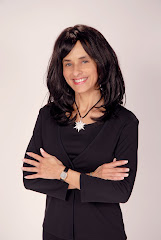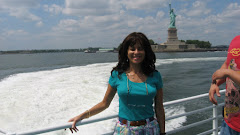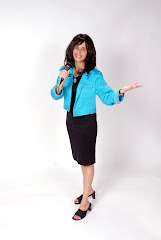







Today, I took a moving and memorable ten-hour, private tour of both Jerusalem, and (Palestine Controlled) Bethlehem. What struck me most was how lush and green the countryside was; that we could see the 436-mile “security wall” from different locations; and as we entered Jerusalem, I was amazed by how densely populated the city is with neighborhoods tightly built up into the hillside. Of course, the imposing Temple Mount with its distinctive, glistening golden Dome of the Rock, one of the most sacred Muslim sites in the world, can be seen from every corner of the city. Because it is situated on a most holy Jewish site (Abraham almost sacrificed his son, Solomon built 1st Temple, and 2nd temple was built), its location is a source of never-ending conflict between Muslims and Jews.
Downtown Jerusalem is very congested and the streets are too narrow for the volume of traffic and not much better for pedestrians. Parking is a nightmare and many park right on the pavement. Fortunately, our small van was able to navigate the narrow streets that connect and surround parts of the old city. Our first stop was lookout point with spectacular panoramic views of the city, dominated by the breathtaking Dome of The Rock. Then, we drove along the Mount of Olives, of great importance to Jews, Christians, and Muslims, with shrines dedicated to all 3 religions. It houses the Jewish cemetery which is considered a most sacred burial ground for Jews worldwide, today. At the foot of the mountain, we visited the garden of Gethsemane, where Jesus was arrested and the Church of All Nations.
We could see panoramic views of Mount Zion from different points throughout the day.
Next, we headed for the Old City, walled in by ancient stone, containing the greatest concentration of all weaves of society, in a maze of winding streets. Included are the Jewish, Muslim, Armenian, and Christian Quarters, all filled with colorful markets, aromatic cafes, pungent restaurants, and pedestrian streets with nearby sounds of Jewish prayer at the Western wall, Catholic church bells ringing, and the call to Muslim prayer from muezzin--all within minutes of each other.
Here, we had tours of inside of the famous (and very crowded) Church of the Holy Sepulchre; Via Dolorosa (the path along which Jesus was forced to walk with the cross on his back—we visited stations 5, 6, & 7); the Western (“Wailing”) Wall; and through Arab Markets. I found the Western Wall, one of the Holiest Jewish sites in the world, most moving of all. I wrote a prayer and pressed it into a crevice of the wall. I must confess: I peeked at the men on the other side of the gender partition and photographed some of them. Of course, there side looked more interesting.
On Jerusalem: I love the co-existence of east and west, ancient and modern, secular and religious, and there are still even those who ride on donkeys, camels, and horses. Jerusalem’s residents come from more than a hundred ethnic and religious backgrounds. The ride ranging mix of people can be seen while walking down a street: a cassocked priest from an Eastern Orthodox Church, a black-veiled, abaya-clad Muslim woman, and an Ethiopian immigrant in flowing white robes, a black-garbed Orthodox Jew with beard and corkscrew curls, and an Indian immigrant in a colorful sari. All in one mosaic inside a 42-square mile radius.
Next, our Israeli tour guide, Ron, left our bus because he refused to stay on the bus as it moved into Palestine-controlled Bethlehem and because he did not wish to share space with our Palestinian tour guide. Despite his warnings, we felt very safe in Bethlehem and our Tour Guide, Samir, a Christian Palestinian, was a gentle and respectful soul. Of note, our Israeli tour guide made it clear he was NOT going to be politically correct and at one point even referred to some Arab children as maggots.
We were required to go through an official check point to enter Bethlehem. We strolled through the streets of Bethlehem to visit the Church of the Nativity, believed to be the birth place of King David and Jesus. For lunch, we dined in a small restaurant that gave us a choice between two delicious sandwiches: shawarma or falafel. Vendors followed us to the next stop (LOL) which was a large Christian gift shop. The official checkpoint leading back into Jerusalem (from the West Bank) was much more stringent with armed guards coming on board our van to check us out.
It was obvious we were spending time in a military states whose primary purpose is survival. Israel’s ports must be the most heavily guarded in the world. The port of Ashdod was flooded with military ships. Although I felt a bit uneasy before going there, I admit I felt quite safe.
I enjoyed the day and will visit New Jerusalem and several museums next time.






.jpg)
.jpg)




No comments:
Post a Comment